
The Southern Baptist Convention (SBC), alternatively the Great Commission Baptists (GCB), is a Christian denomination based in the United States. It is the world's largest Baptist denomination, and the largest Protestant and second-largest Christian denomination in the United States. In 1845 the Southern Baptists separated from the Triennial Convention in order to support slavery, which the southern churches regarded as "an institution of heaven". During the 19th and most of the 20th century, it played a central role in Southern racial attitudes, supporting racial segregation and the Lost Cause of the Confederacy while opposing interracial marriage. In 1995, the organization apologized for its history. Since the 1940s, it has spread across the United States, having member churches across the country and 41 affiliated state conventions.
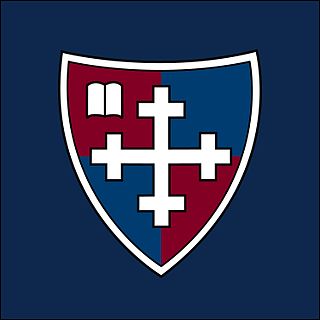
Gordon–Conwell Theological Seminary (GCTS) is an evangelical seminary with its main campus in Hamilton, Massachusetts, and three other campuses in Boston, Massachusetts; Charlotte, North Carolina; and Jacksonville, Florida. According to the Association of Theological Schools, Gordon-Conwell ranks as one of the largest evangelical seminaries in North America in terms of total number of full-time students enrolled.

Temple University is a public state-related research university in Philadelphia, Pennsylvania. It was founded in 1884 by the Baptist minister Russell Conwell and his congregation Grace Baptist Church of Philadelphia then called Baptist Temple. On May 12, 1888, it was renamed the Temple College of Philadelphia. By 1907, the institution revised its institutional status and was incorporated as a research university.

Reformed Baptists, Particular Baptists and Calvinistic Baptists, are Baptists that hold to a Calvinist soteriology. Depending on the denomination, Calvinistic Baptists adhere to varying degrees of Reformed theology, ranging from simply embracing the Five Points of Calvinism, to accepting a modified form of federalism; all Calvinistic Baptists reject the classical Reformed teaching on infant baptism as a sign and seal of the covenant of grace. The first Calvinistic Baptist church was formed in the 1630s. The 1689 Baptist Confession of Faith is a significant summary of the beliefs of Reformed Baptists. The name "Reformed Baptist" dates from the latter part of the 20th century to denote Baptists who retained Baptist ecclesiology, but adopted elements of Reformed doctrine, such as covenant theology.

The Metropolitan Tabernacle is a large independent Reformed Baptist church in the Elephant and Castle in London. It was the largest non-conformist church of its day in 1861. The Tabernacle Fellowship have been worshipping together since 1650. Its first pastor was William Rider; other notable pastors and preachers include Benjamin Keach, John Gill, John Rippon and C. H. Spurgeon. The Tabernacle still worships and holds to its Biblical foundations and principles under its present pastor, Peter Masters.
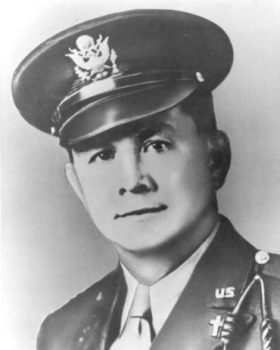
The Four Chaplains, also referred to as the Immortal Chaplains or the Dorchester Chaplains, were four World War II chaplains who died rescuing civilian and military personnel as the American troop ship SS Dorchester sank on February 3, 1943, in what has been referred to as the second-worst sea disaster of World War II. The Dorchester was a civilian liner converted for military service in World War II as a War Shipping Administration troop transport. She was able to carry slightly more than 900 military passengers and crew.

The First Baptist Meetinghouse also known as the First Baptist Church in America. It is the oldest Baptist church congregation in the United States. The Church was founded in 1638 by Roger Williams in Providence, Rhode Island. The present church building was erected between 1774 and 1775 and held its first meetings in May 1775. It is located at 75 North Main Street in Providence's College Hill neighborhood. It was designated a National Historic Landmark in 1960. It is affiliated with the American Baptist Churches USA.

Russell Herman Conwell was an American Baptist minister, orator, philanthropist, author, lawyer, and writer. He is best remembered as the founder and first president of Temple University in Philadelphia, as the Pastor of The Baptist Temple, and for his inspirational lecture, "Acres of Diamonds". He was born in South Worthington, Massachusetts.
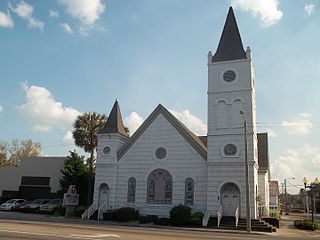
The black church is the faith and body of Christian denominations and congregations in the United States that minister predominantly to, and are led by, African Americans, as well as these churches' collective traditions and members. The term "black church" may also refer to individual congregations, including in traditionally white-led denominations.
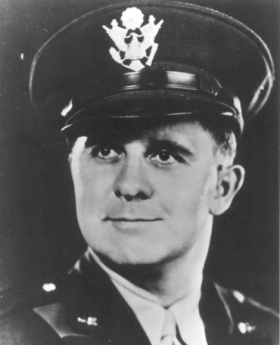
Clark Vandersall Poling was a minister in the Reformed Church in America and a lieutenant in the United States Army. He was one of the Four Chaplains who gave their lives to save other soldiers during the sinking of the troop transport Dorchester during World War II.

The Reformed Episcopal Seminary is a private seminary in Blue Bell, Pennsylvania. It was founded in 1887 as the first seminary of the Reformed Episcopal Church.
Since 1937, the United States presidential inauguration has included one or more prayers given by members of the clergy. Since 1933 an associated prayer service either public or private attended by the president-elect has often taken place on the morning of the day. At times a major public or broadcast prayer service takes place after the main ceremony most recently on the next day.

The Tremont Street Methodist Episcopal Church, located at 740 Tremont Street in Boston, Massachusetts, was built in 1862 from a design by architect Hammatt Billings. In the late 1960s it became the New Hope Baptist Church.
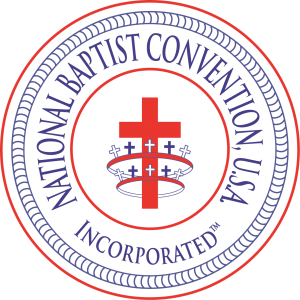
The National Baptist Convention, USA, Inc., more commonly known as the National Baptist Convention, is a Baptist Christian denomination headquartered at the Baptist World Center in Nashville, Tennessee and affiliated with the Baptist World Alliance. It is also the largest predominantly and traditionally African American church in the United States and the second largest Baptist denomination in the world.

Temple Baptist Church/King Solomon Baptist Church consists of two buildings at the intersection of Fourteenth Avenue and Marquette Avenue in Detroit, Michigan. The original church, which later became known as the Educational and Recreation Building, is a Tudor Revival structure built by architect J. Will Wilson in 1917, then remodeled and made into classrooms and office space by 1940. The second building, also known as the Main Auditorium, is an Art Deco building constructed in 1937 and remains largely unchanged. The buildings are now owned by King Solomon Missionary Baptist Church.

The Twelfth Baptist Church is a historic church in the Roxbury neighborhood of Boston, Massachusetts. Established in 1840, it is the oldest direct descendant of the First Independent Baptist Church in Beacon Hill. Notable members have included abolitionists such as Lewis Hayden and Rev. Leonard Grimes, the historian George Washington Williams, the artist Edward Mitchell Bannister, abolitionist and entrepreneur Christiana Carteaux, pioneering educator Wilhelmina Crosson, and civil rights movement leader Dr. Martin Luther King Jr.

First Baptist Church of Philadelphia is a Baptist church founded in 1698 in Philadelphia, Pennsylvania, United States.
Temple Health also known as Temple University Health System is a non-profit academic healthcare network based in the Philadelphia, Pennsylvania, United States. The healthcare network serves Pennsylvania and its flagship hospital is Temple University Hospital, a safety net hospital, located in Philadelphia. Research activities are carried out by the affiliates of Temple University Health System and the Lewis Katz School of Medicine at Temple University.

The First Baptist Church of Greater Cleveland is an historic Baptist church in Shaker Heights, Ohio. Founded in 1833, it was the first Baptist church in the Cleveland, Ohio area and is the fourth oldest church in Cleveland.
Highland Park Baptist Church was a prominent Southern Baptist church in the Highland Park neighborhood of Chattanooga, Tennessee. During the four-decade pastorship of Dr. Lee Roberson, it was a center of the Independent Baptist movement and became an early megachurch.

















